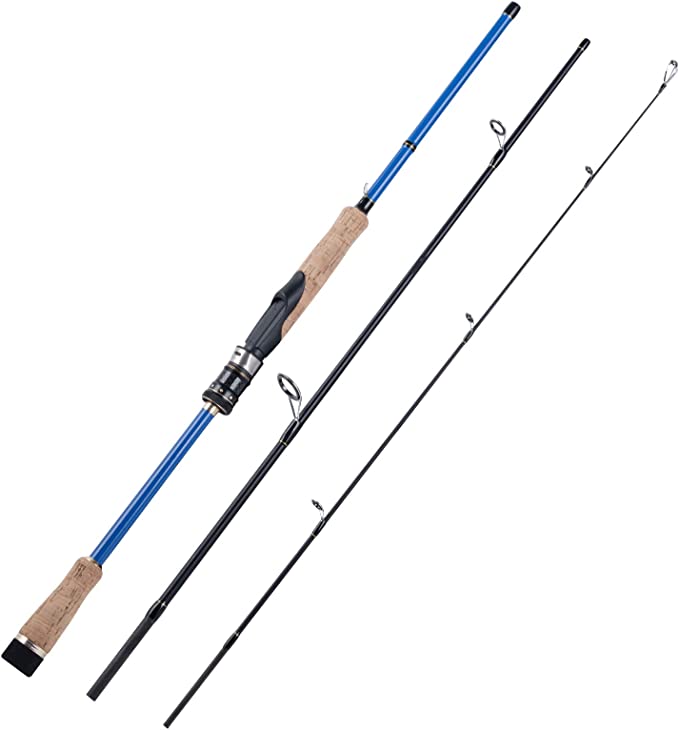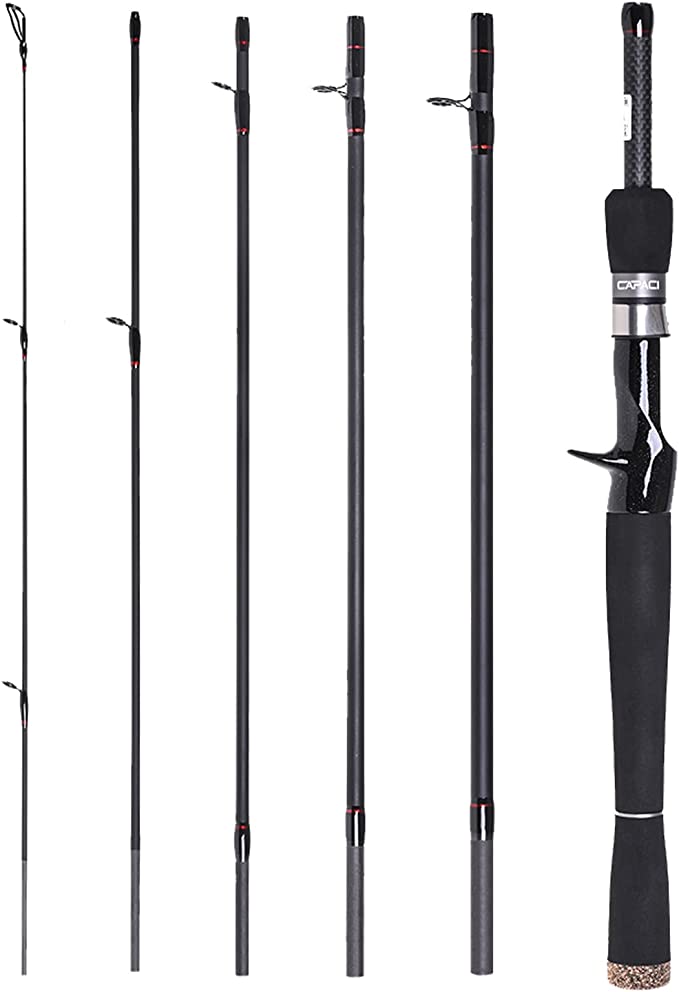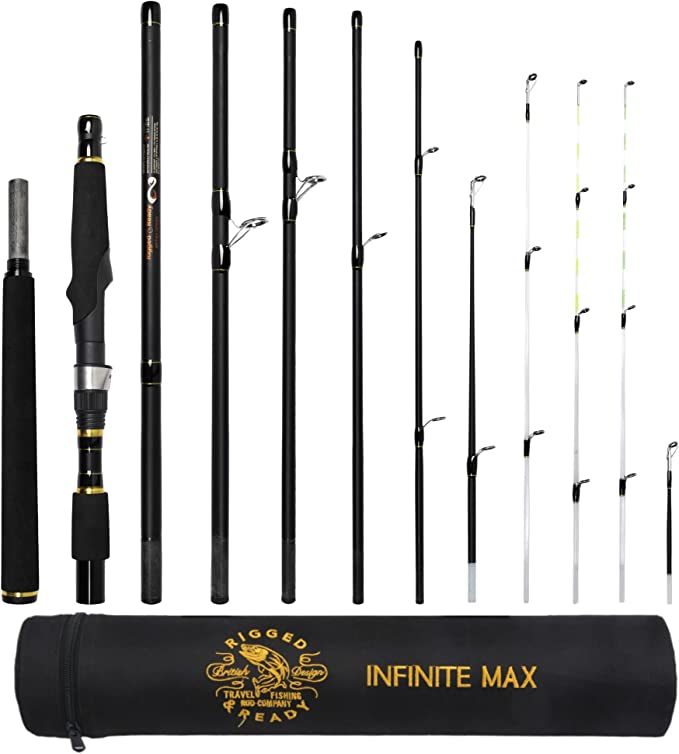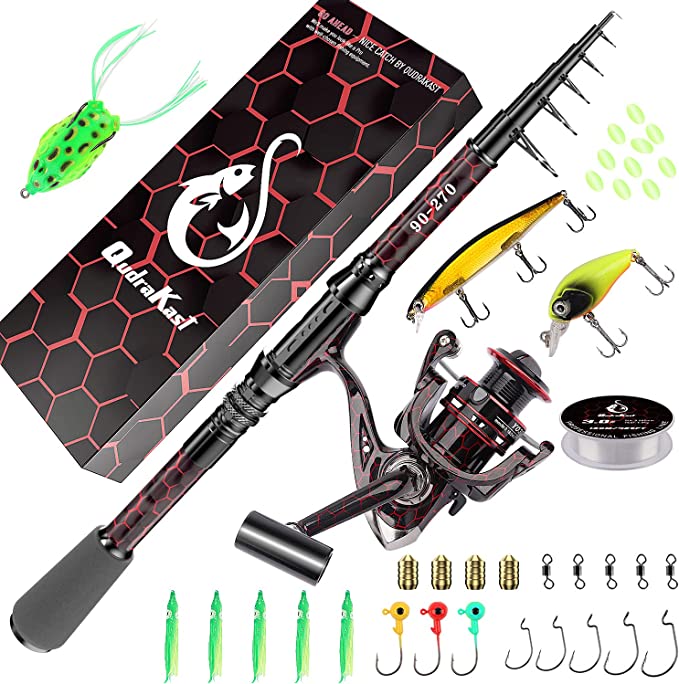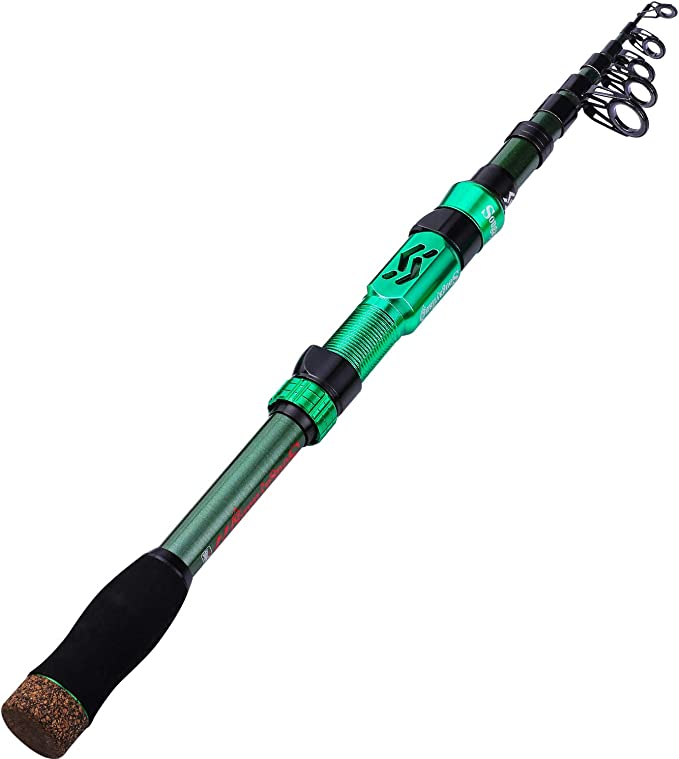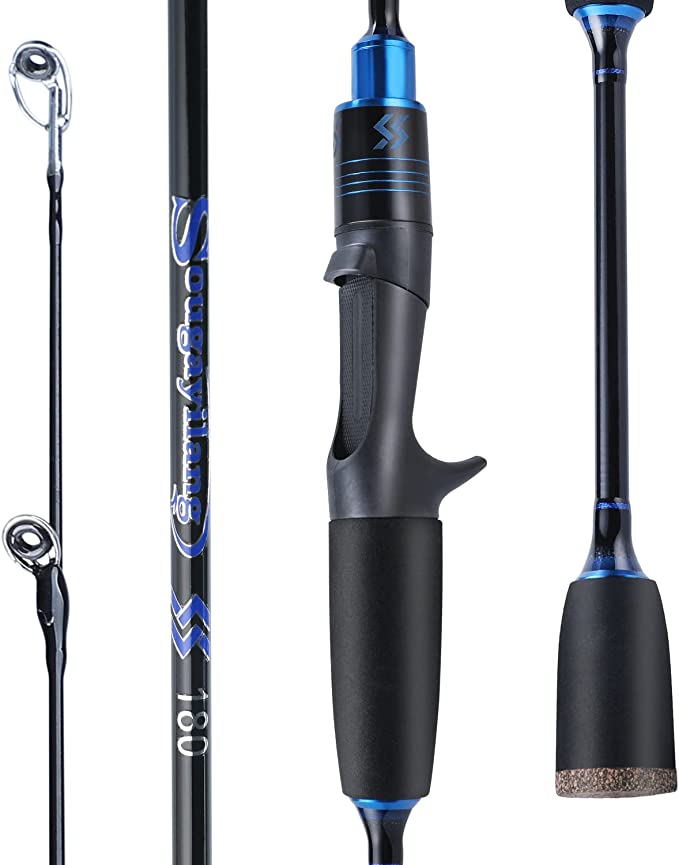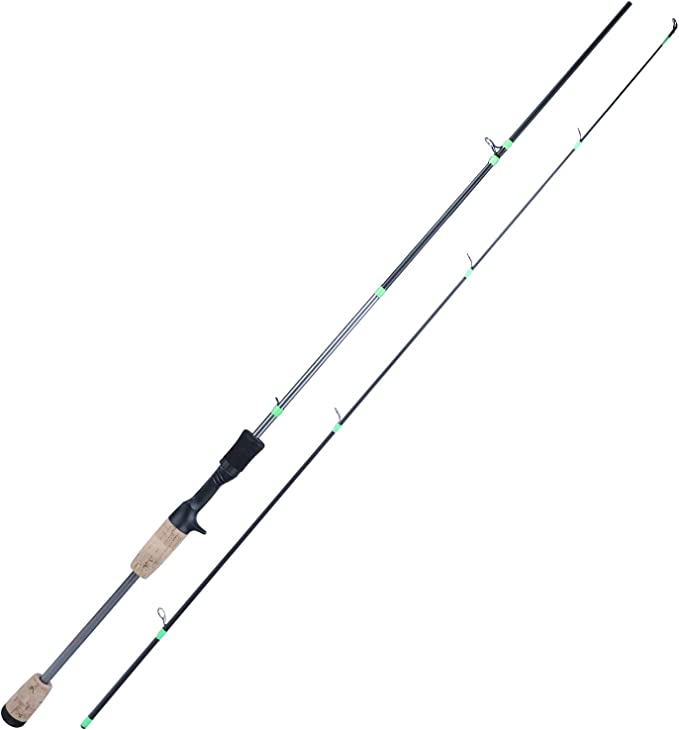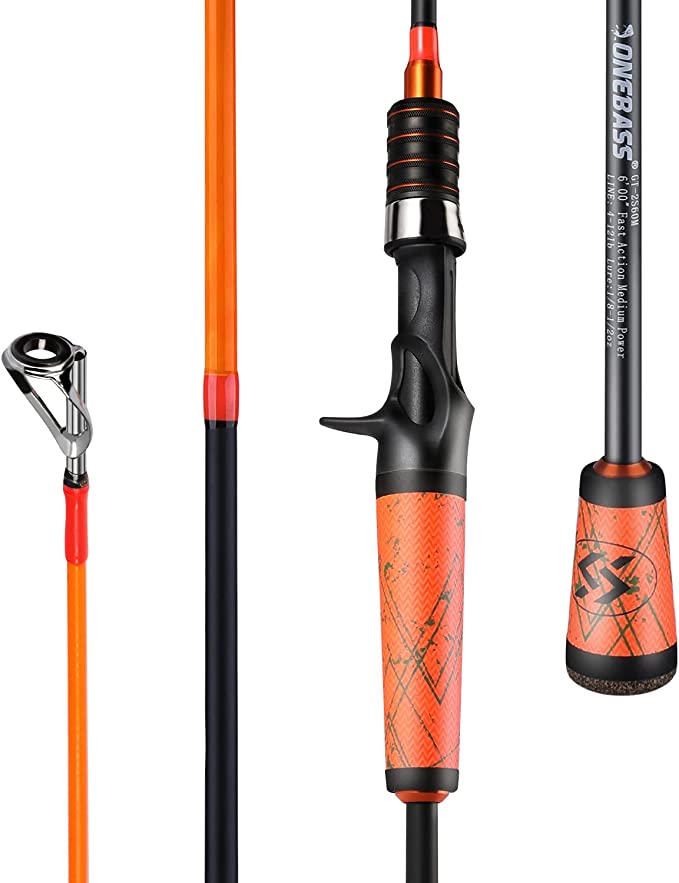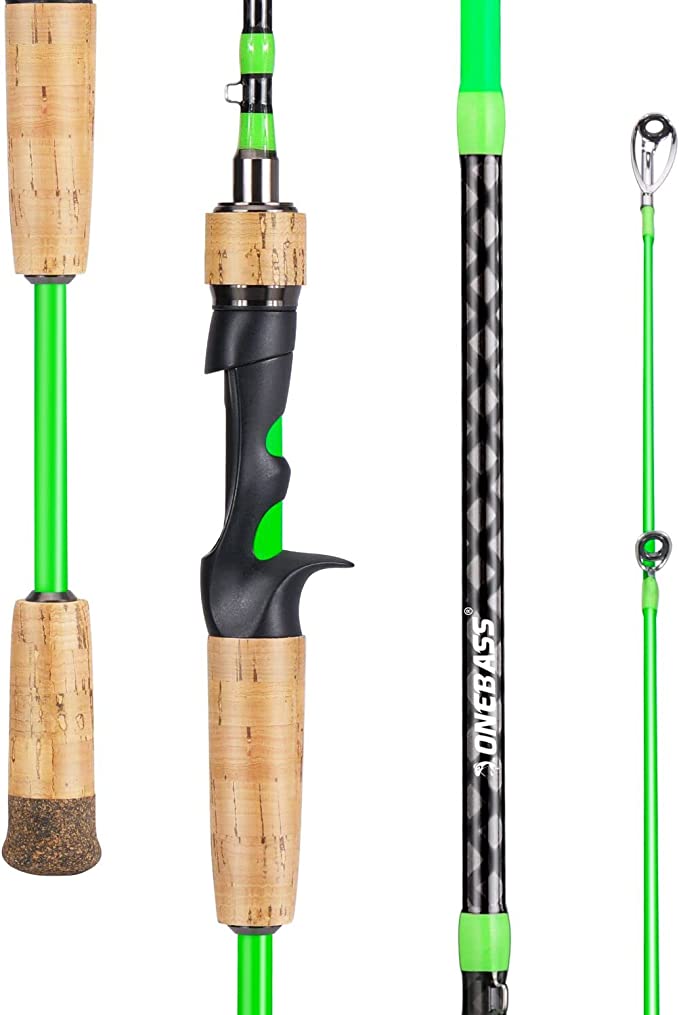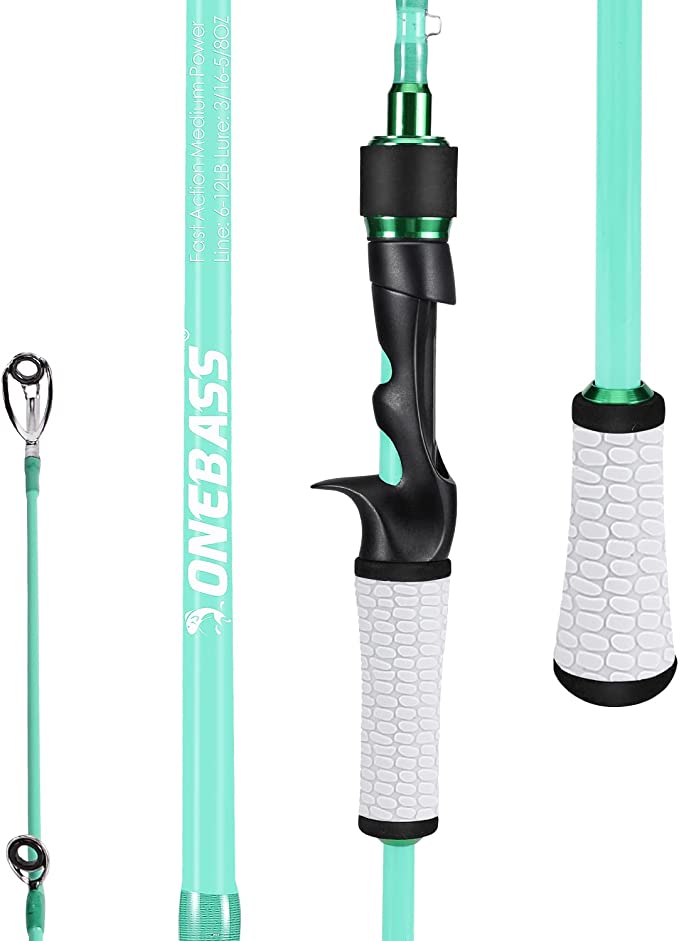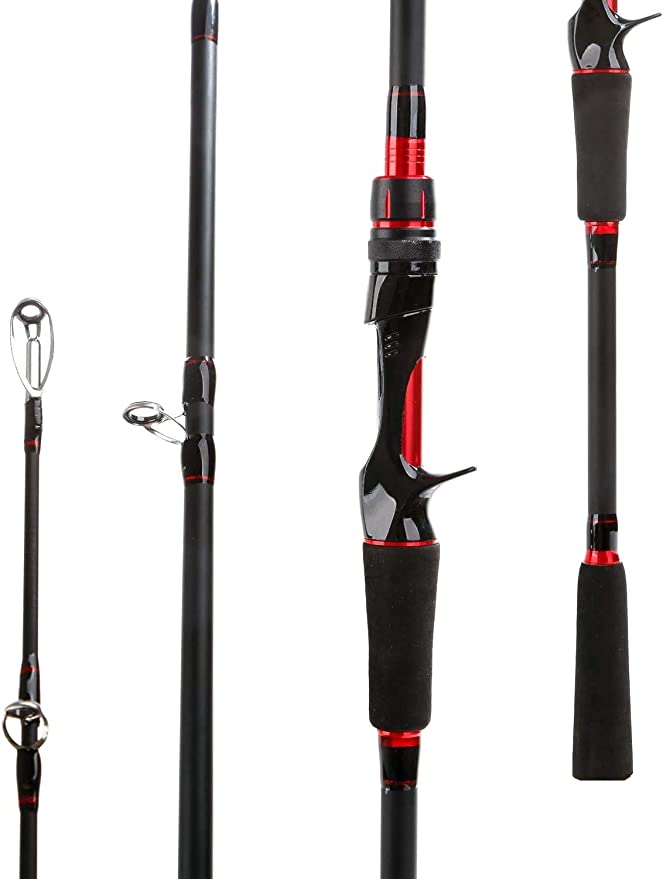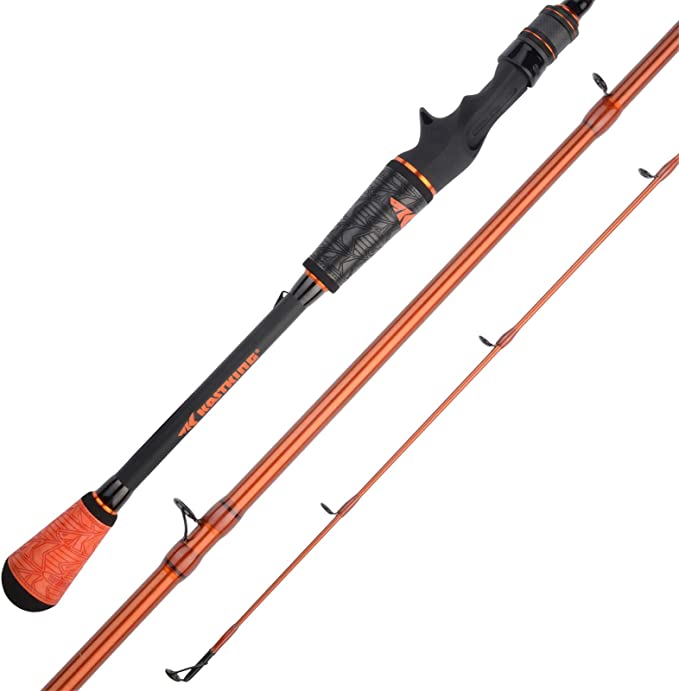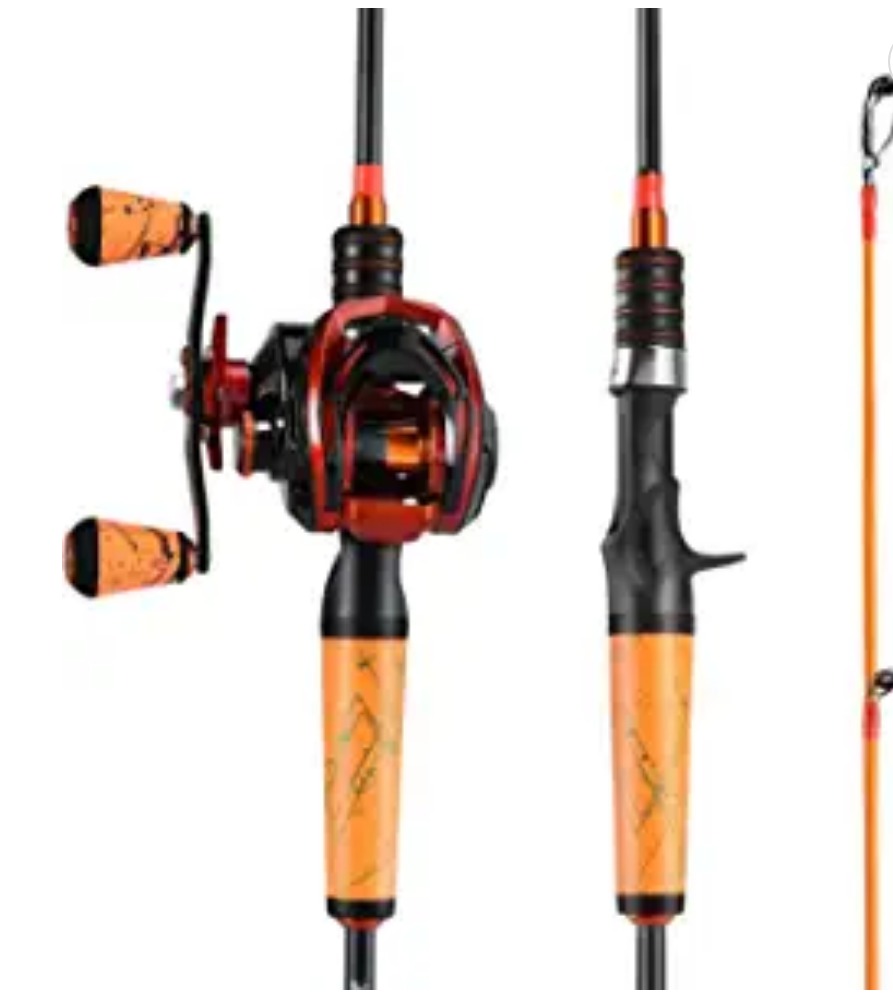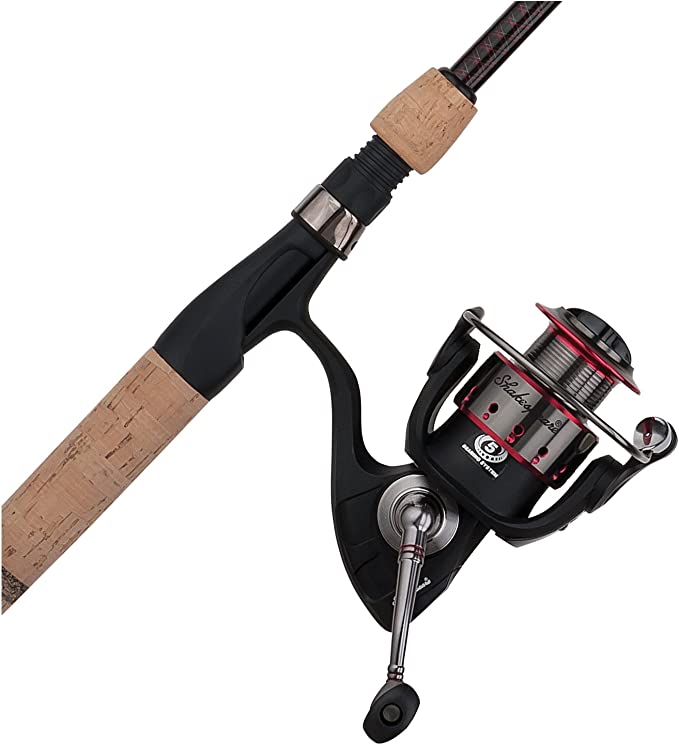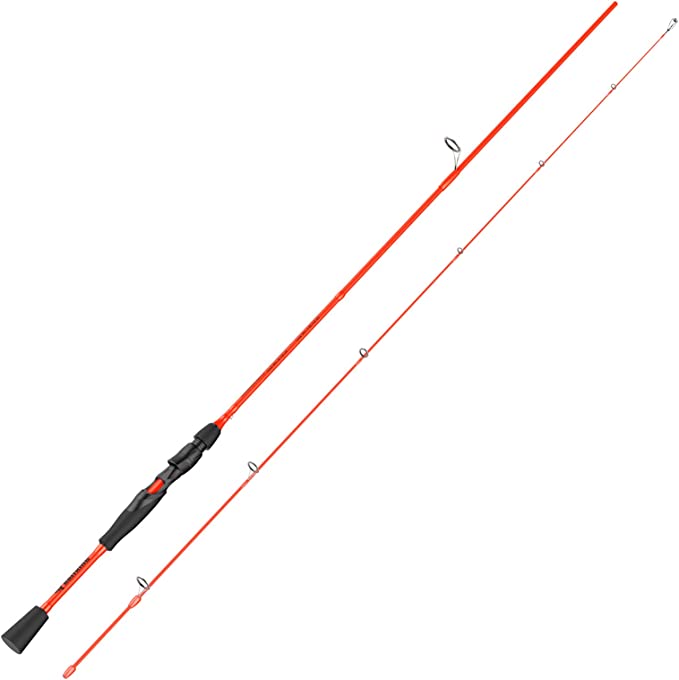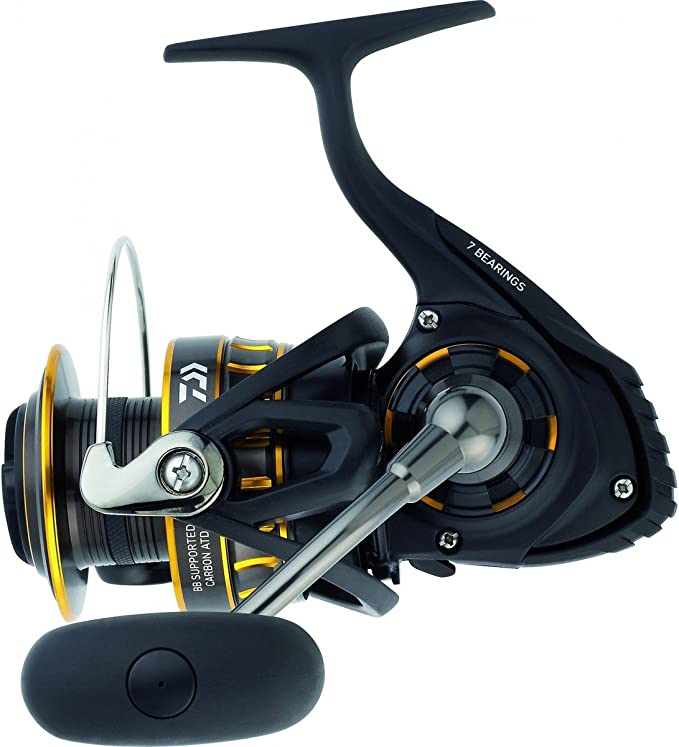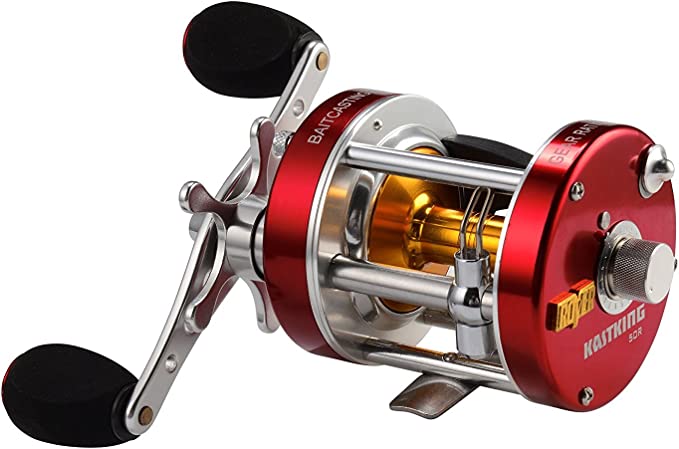The Science of Freedom: How a 4-Piece Travel Fishing Rod Works
Update on Aug. 1, 2025, 8:35 a.m.
There’s a silent call that every angler hears—the whisper of a distant shoreline, an alpine lake just over the ridge, or a hidden coastal cove accessible only by plane. For generations, the tools of our trade dictated the limits of our reach. A finely crafted fishing rod was a single, indivisible tool, its length a barrier to true portability. The history of angling is a story of evolution, from the simple pliability of wood and bamboo to the post-war revolution of fiberglass, each step bringing more anglers to the water. Yet, the fundamental conflict remained: performance or portability? To answer that call of the horizon, you needed a breakthrough. That breakthrough is the modern Travel Fishing Rod, a marvel of material science and physics that turns the age-old compromise into a statement of freedom. Using a rod like the Goture 4 Piece Travel Fishing Rod as our specimen, we can dissect the science that makes this freedom possible.
The Soul of the Rod: Carbon, Energy, and a Language of Vibrations
The heart of any modern high-performance rod, travel or otherwise, is its blank. The shift to carbon fiber in the 1970s was as monumental as the move from steam to internal combustion. When you see a specification like a “30-ton carbon matrix,” it’s not a measure of weight but of stiffness, a scientific property known as Young’s Modulus. Imagine two springs: one is soft and easy to stretch, the other is incredibly stiff. The stiff spring can store, and then release, far more energy. A high-modulus carbon fiber blank acts like that stiff spring.
This is the fundamental physics of the cast. As you bring the rod back, it bends, loading up with potential energy. A rod with a “Fast” action, typical for versatile applications like fishing for bass or walleye, concentrates this bend near the tip. It’s essentially a cantilever beam, and its ability to efficiently store and then explosively unleash this energy determines your casting distance and accuracy. The high stiffness of a 30-ton carbon fiber means it snaps back to its straight form with incredible speed and minimal energy loss, launching your lure with precision.
But the magic of carbon fiber goes beyond power. This same stiffness makes it an extraordinary conductor of information. A fish’s subtle take, the gentle tap of your lure on a rocky bottom, the vibration of a spinner blade—these are all just vibrations traveling up your line. A dense, stiff blank transmits these signals with incredible fidelity, almost like a stethoscope, transforming the rod from a mere casting tool into an exquisitely sensitive extension of your own nervous system.
The Unseen Strength: Engineering the Flawless Connection
For decades, the Achilles’ heel of any multi-piece rod was the joint. How do you connect two or more sections without creating a weak, stiff, or “dead” spot that ruins the rod’s natural curve and power flow? Early multi-piece rods often felt clunky, with a noticeable hinge-like effect at the ferrule. The solution, employed in quality designs, is a feat of subtle engineering: the Spigot Ferrule.
Imagine trying to join two hollow tubes by simply sliding one over the other. The point of overlap would be twice as thick and significantly stiffer, creating a major disruption in how the structure bends under load. This can lead to stress concentration, the primary culprit behind rod failure. A spigot ferrule elegantly solves this. It utilizes a solid, internal carbon dowel (the “spigot”) that is permanently fixed into the lower section. The upper section then slides snugly over this internal bridge.
This design creates a seamless transition. As the rod bends, the force flows smoothly from one section, through the spigot, and into the next, allowing the entire blank to arc in a continuous, parabolic curve. It maintains the rod’s intended action and distributes stress evenly, giving the 4 piece fishing pole the feel and, more importantly, the strength and reliability of a one-piece blank. It is the unseen engineering that builds confidence when you’re fighting a powerful pike miles from civilization.
It’s All in the Details: From Frictionless Flow to All-Day Comfort
While the blank is the soul, the components are the nervous system that allows it to function perfectly. The series of ceramic guides lining the rod are more than just line holders; they are high-performance bearings. Ceramic is chosen for two key physical properties: an incredibly low coefficient of friction and excellent thermal conductivity.
As your line flies out during a cast, or peels off the reel under the run of a strong fish, it generates friction and heat. Low friction means your line glides through the guides with minimal resistance, maximizing your casting distance and protecting the line from abrasive wear. Just as importantly, the ceramic’s ability to rapidly dissipate heat prevents the line—especially modern braided lines—from weakening or snapping under the intense heat generated during a long, hard fight.
Finally, the point of contact, the EVA split grips, represents the science of ergonomics. Ethylene Vinyl Acetate (EVA) is a closed-cell foam that is remarkably light, durable, and doesn’t absorb water. It provides a firm, comfortable grip that reduces fatigue over a long day of casting. The split-grip design isn’t just for aesthetics; it further reduces the rod’s overall weight and increases sensitivity by allowing your hand to make more direct contact with the exposed blank, ensuring that last, subtle vibration from the tip makes it all the way to your fingertips.
Conclusion: More Than a Tool, It’s a Passport
To assemble a modern travel rod on the bank of a remote river is to participate in a small act of mechanical wonder. Each section clicks into place, not as a compromise, but as a testament to the deliberate application of material science and physics. The Goture Travel Fishing Rod, and others like it, are not simply “good for a travel rod.” They are, by every metric that matters, exceptional fishing tools. They prove that you no longer have to choose between the freedom to explore and the confidence to handle whatever you might find. The engineering packed into that slim, portable case is more than just carbon and ceramic; it’s a passport, empowering you to answer the call of those distant waters and write your own angling story, one cast at a time.
